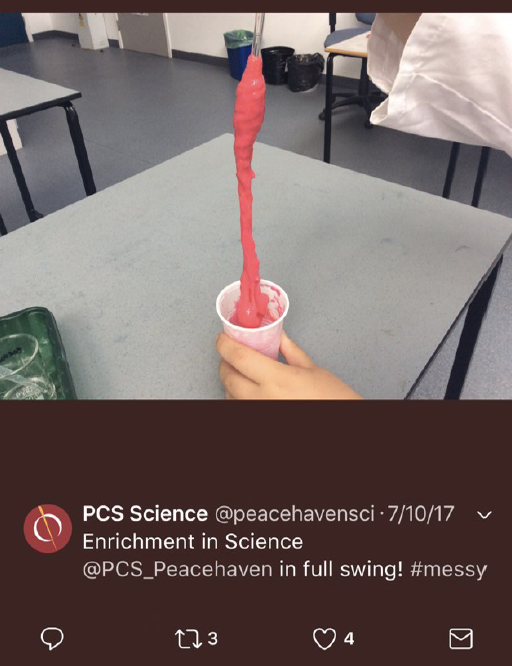
How did you get started?
Young people consume huge amounts of information on social media, constantly scrolling from one thing to the next. I thought that if I could scatter some bite-sized nuggets of science into their streams then it might help to get some important messages through to them.
Initially I used Twitter, posting images of diagrams that I’d displayed on the whiteboard. I then began sharing examples of students’ work, partly to praise the student but also to showcase how well our young people were doing to the wider community. This approach went down very well and our following has been growing ever since. We are attracting other schools and organisations, which is helping to build our reputation for science and technology.
Why did you choose to trial Snapchat?
I’m always looking for better ways to engage the students so I simply asked them what channels they used and which ones they thought would work best for science posts. Snapchat was the most popular suggestion so I decided to run a pilot scheme to push revision resources for Key Stage 4. We launched it in October 2017 and so far it has been proving very popular. It’s very easy to evaluate the engagement as I’m able to see who’s following us, who’s looked at the post and who has screenshot the content to use later on. We’re currently getting between 40-80 views per post and around 15%-25% of users will take a screenshot.
What makes good content for posts?
The key is to have something with instant appeal, otherwise they will just scroll on past. Whizz-bang demos are very popular and anything with a bit of drama. I try and find ways to illustrate complex ideas, so images of equations and diagrams of processes work well. Video tutorials are popular – I film myself working through a process or problem which I speed up so it’s condensed into a 20 second film. Students seem to respond better to a teacher they know rather than a random person – even if it is because they just want to see to what Mr Chapman is getting up to now!
I also post work that our students are doing – it celebrates success and creates a real sense of excitement to share a practical that has been carried out in one lesson with everyone else.

What improvements in student engagement and performance have you seen?
Students are definitely more engaged with science. I’m often stopped in the corridor by someone who is struggling with a particular topic or idea and asked if I’ll put a post up about it. The students also like seeing their own work so I think they try harder so that I’ll choose theirs to showcase.